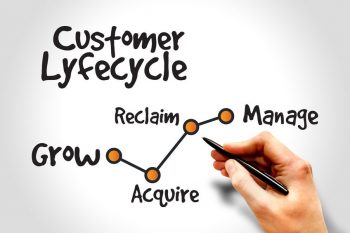Companies and organisations want to manage the customer experience they provide, but only few can deliver their products and services completely on their own. The rest have to or have chosen to outsource parts to different subcontractors or partners. This helps to grow the reach and gain efficiencies. But it also creates a challenge in managing the customer experience, when many of the touch points are not in a company’s control. And this is where the expectations are often not met as intended.

The airline industry is a good example. It has a complex ecosystem of partners that are required to provide to a large network of destinations. The airlines can typically control the experience inside their own planes and on their on-line channels. But for the rest of the touchpoints they have often to rely on alliance partners who handle companies and airports among others. This is often arranged in a complex web of subcontracting agreements negotiated by different departments. Here the end-to-end customer experience promise is too often lost as the following example illustrates.
Recently, I’ve landed late at night to a major European airport, but my luggage did not make it. “No worries, your bag will arrive by tomorrow afternoon”, reassured me the helpful handling agent (a global company contracted by the airline I flew with), and gave me a tracking number. However, when I logged in to the luggage tracing system run by a software company jointly owned by a group of airlines, I realised that I could not update my contact details due to a SW bug. The global handling agent on the other hand had only a local (premium rate) number that worked only during the office hours – not convenient at 2 AM. Next morning when I reached them by phone, I was told that my suitcase would be delivered some time in the afternoon. As I was not staying in a hotel and had meetings to attend, I asked to be called once the driver (subcontractor of the contracted handling agent) was on his way. However, the drivers are not able to call foreign numbers – not very practical when delivering delayed luggage to foreign visitors – so a drop off to a café next door had to be agreed.
The airline had made a brand promise of premium quality, which they had delivered well throughout journey until it came to delivering the luggage at the destination. What their contractors were delivering was not in line with the level of their customer, the airline. But what is causing this, as no one usually intentionally delivers bad experience? It is coming from the siloed approach how the contracting agreements have been set up. Focus has been more on price and strategic partnerships than on own customers.
So, how can this be fixed the best:
1. Take mental ownership of the complete service delivery.
You cannot delegate responsibility.
2. Empathy – the main ingredient on designing and delivering good experience.
This means understanding the customer expectations (both rational and emotional) at each touchpoint regardless who delivers them.
3. Define your brand promise and targeted service level –
for the whole customer journey including exceptions and problem cases
4. Include the CX or the business owner in the contract negotiations
5. Ensure that your supplier contracts have KPIs that deliver the targeted service level
6. Set measures where ever possible and integrate them to yours
7. Test and monitor customer feedback
8. Redesign and re-evaluate wherever needed –
competition do not stand still and customers want more today than they did yesterday.
Partners are essential, but your customers do not care how you organise your business – they care about the experience they receive. Managing the partner component of the delivery is crucial in managing your customers’ experience.



